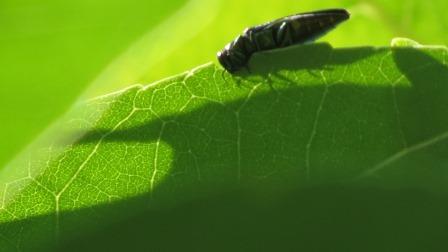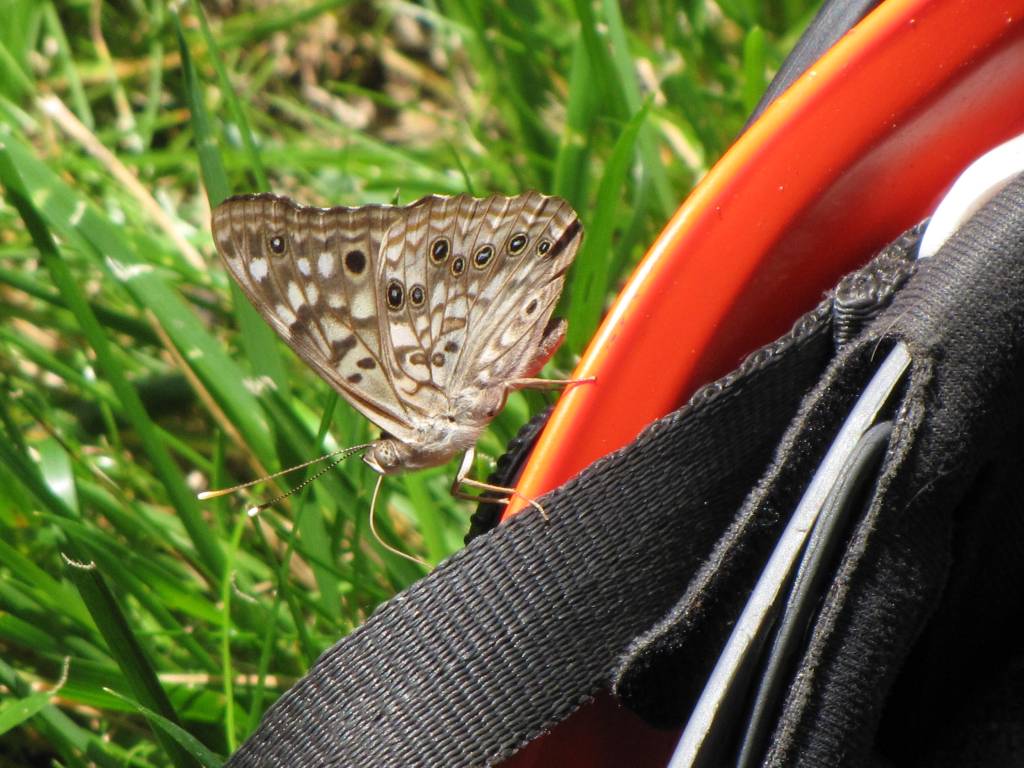RIGHT NOW is the time of year that emerald ash borer (EAB) adults are active. Here are some photos I took last Wednesday in Willow Grove, Bucks County, PA.
This ash tree had some live branches on it a few weeks ago. Landscape maintenance people have cut and removed them.
Wonder where they disposed of them.
Tree in same parking lot – adults are now emerging and feeding on leaves
Adults feeding
They’re inconspicuous; you might not notice them if you are not looking for them.
Not easy to recognize as a beetle when they’re flying. Not easy to see them when they are feeding on the upper leaf surface, but you can spot their shadows if it’s sunny.
Adult beetles
The emerald ash borer is well established now in this portion of Bucks County. I predict that the spread to surrounding areas is now imminent, as many trees are dying, and inevitably the wood of some of them will be unwittingly relocated.
The emerald ash borer is not the only reason for the decline of the health of ash trees in Southeast Pennsylvania. In some of the neighborhoods where we work, the majority of ashes seem to be dying but there is no sign of EAB.
One factor responsible for this is freeze damage from the warm winter and spring three years ago. Yes, you read that right. Freeze damage. Ash trees normally are one of the last species to get leaves in spring – usually the middle of May. But the consistent warm weather tricked them in to breaking bud over two weeks ahead of schedule. Then we had a surprise late cold snap. Ashes in particular were injured, and many have not recovered from the stress, predisposing them to secondary pests.
Speaking of secondary pests, here are photos of some of the ones I see most commonly. These insect are all native, and are not normally considered a serious threat to ash trees as they don’t usually kill healthy trees.
galleries of Eastern ash bark beetle in green ash
 banded ash borer – Neoclytus caprea
banded ash borer – Neoclytus caprea
 collected specimens of EAB, banded ash borer, Tylonotus bimaculatus (Ash and Privet Borer), another native ash borer.
collected specimens of EAB, banded ash borer, Tylonotus bimaculatus (Ash and Privet Borer), another native ash borer.
More on ash and privet borer at July 21, 2009
You can see good photos of more ash pests at Michigan Extension Bulletin E-2939 http://www.emeraldashborer.info/files/e-2939.pdf


















